Environmentalists Guy Marwick and Bob Knight are using their expertise to try to save Florida’s natural resources. And many of their efforts begin and end at Marion County’s freshwater springs.
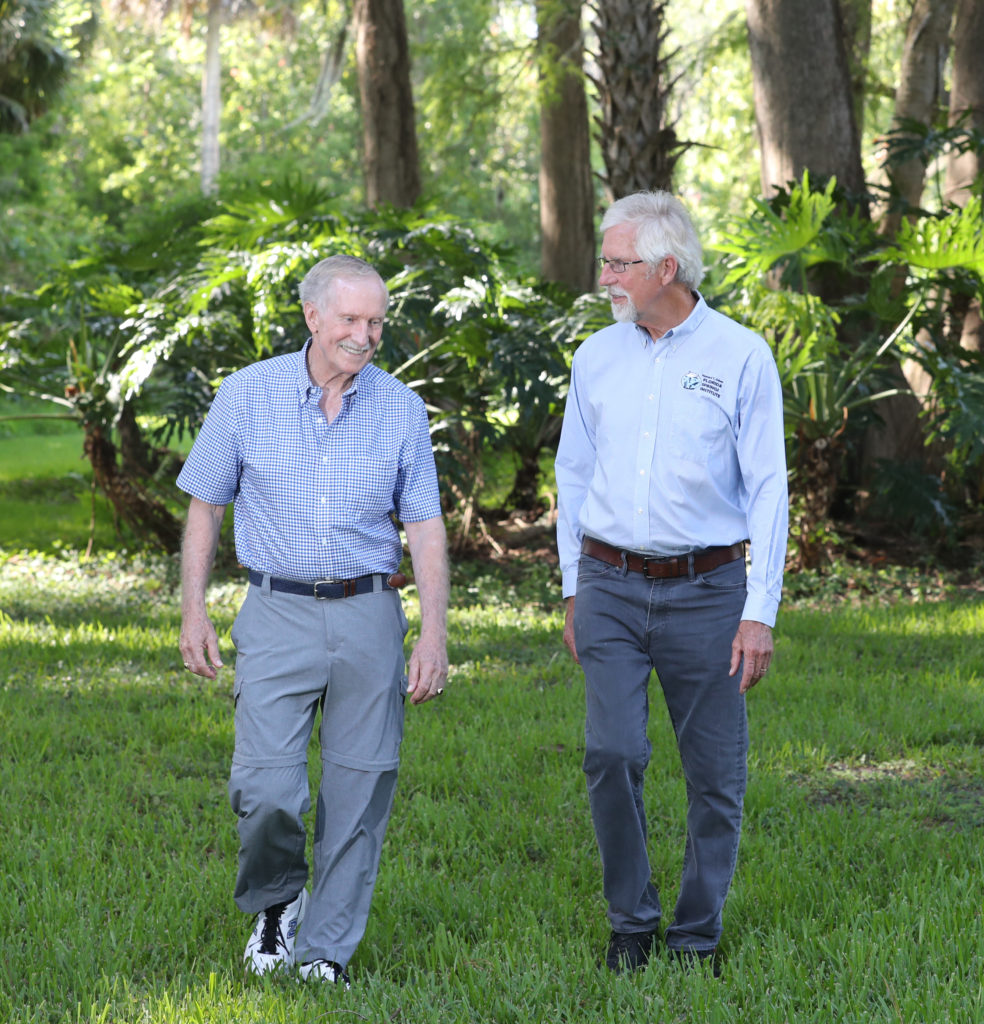 You dip a paddle in the Silver River and your kayak glides noiselessly between two riverbanks encased in cypress knees, moss-shrouded oaks and palmetto fronds. Or maybe you’re draped across a huge inner tube, leisurely drifting down the Rainbow River. Or, perhaps, you’ve hitched a ride on one of Silver Springs’ glass-bottom boats, and you’re shooting pictures of long-nosed gar beneath your craft and of the turtles and alligators basking on the riverbanks.
You dip a paddle in the Silver River and your kayak glides noiselessly between two riverbanks encased in cypress knees, moss-shrouded oaks and palmetto fronds. Or maybe you’re draped across a huge inner tube, leisurely drifting down the Rainbow River. Or, perhaps, you’ve hitched a ride on one of Silver Springs’ glass-bottom boats, and you’re shooting pictures of long-nosed gar beneath your craft and of the turtles and alligators basking on the riverbanks.
Such is the world Florida’s environmentalists are striving to protect and preserve. Among the most vocal are Guy Marwick, executive director of the Ocala-based Felburn Foundation, and Robert L. Knight, director of the Howard T. Odum Florida Springs Institute in High Springs.
Though they have traveled along different proverbial highways of life, and though each of them has his own personal interests in Florida’s natural resources, ultimately their paths crossed in Marion County partly because of a shared interest in North Central Florida’s voluminous web of freshwater springs.
Marwick’s Journey
Marwick got the shock of his life at a young age when he realized his native state’s landscape was beginning to change, and it wasn’t for the better.
“It started with me seeing the unplanned growth of Broward County where I grew up,” recalls Marwick. “Pompano Beach was completely overrun with uncontrolled growth. It happened so fast that in about a 10- to 12-year period all the green spaces were literally chopped up into subdivisions. One thing that should have been done was to preserve Cypress Creek. There’s no other creek like it in Florida that has plants that grow in the tropics. There were things down there like the shiny bark gumbo limbo trees—huge, enormous trees, 6 and 7 feet in diameter—that had massive strangler fig vines that we don’t have growing up here.
“They channelized the whole creek,” Marwick adds with a touch of bitterness. “Now there’s nothing left. All the reefs that I used to dive in when I was a kid and used to snorkel in for lobster, they were all polluted and died.”
Marwick experienced another awakening in his late teens when he spent the summer working with a crew surveying a mangrove swamp by boat off the Intracoastal Waterway.
“That mangrove swamp became a subdivision,” Marwick groans. “They dug canals and then they put rows and rows of houses on these waterfront canals. Then they started to move west into the everglades. Some of those houses are now in areas that used to be under water. I was too young in Broward County to be an activist, so I said, ‘I’ve gotta get outta here.’”
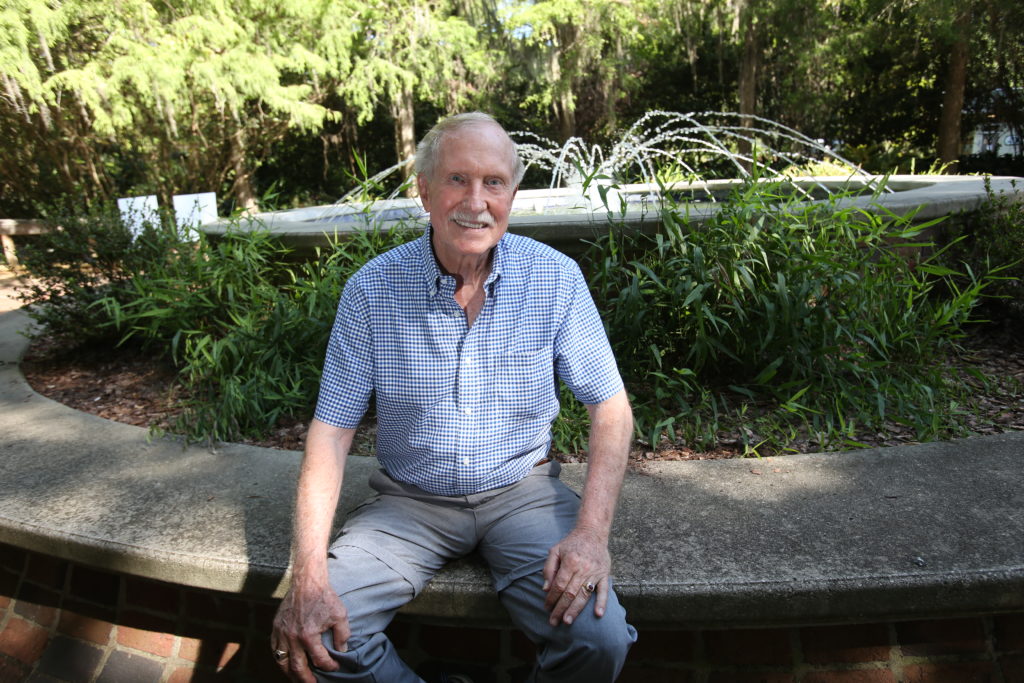 It was 1970 when Marwick, then in his late-20s, felt drawn to another part of the state, North Central Florida, and specifically to the unadulterated Ocala National Forest.
It was 1970 when Marwick, then in his late-20s, felt drawn to another part of the state, North Central Florida, and specifically to the unadulterated Ocala National Forest.
“I knew they had no chance of developing that,” he says with tongue in cheek.
As it turned out, Marion County presented a whole new set of issues. Among them, subdivisions and industries, an overabundance of septic systems, groundwater extractions, increasing pollution of the area’s artesian springs, reduction of the lush forests and pristine horse farms, and a growing threat to Florida’s balance of wildlife, including the world of insects.
“We’ve got 1,000 people a day moving into Florida,” Marwick notes. “My favorite saying is, ‘If we don’t direct our growth then the growth will direct us.’ For Broward County it’s too late. The whole southeastern coast of Florida is one megalopolis. It’s important that we protect what should be protected now. We need to save what we can.”
After working for the Marion County Public Schools system for 36 years, with 20 years in the classroom and 16 as director of the Silver River Museum, Marwick retired in 2004. Following a five-year hiatus backpacking the canyons of the West, he became executive director of the Felburn Foundation.
Established in the 1970s by Phil Felburn and his daughter, Ellie Schiller (both deceased), the foundation has distributed tens of millions of dollars to environmental causes throughout the world, including $899,000 disbursed in the first four months of 2020, Marwick notes.
Last year, the foundation funded $350,000 to add a 3,600-square-foot wing to the Silver River Museum, bringing the total donation to more than $800,000 for the museum’s construction additions over the years, Marwick declares.
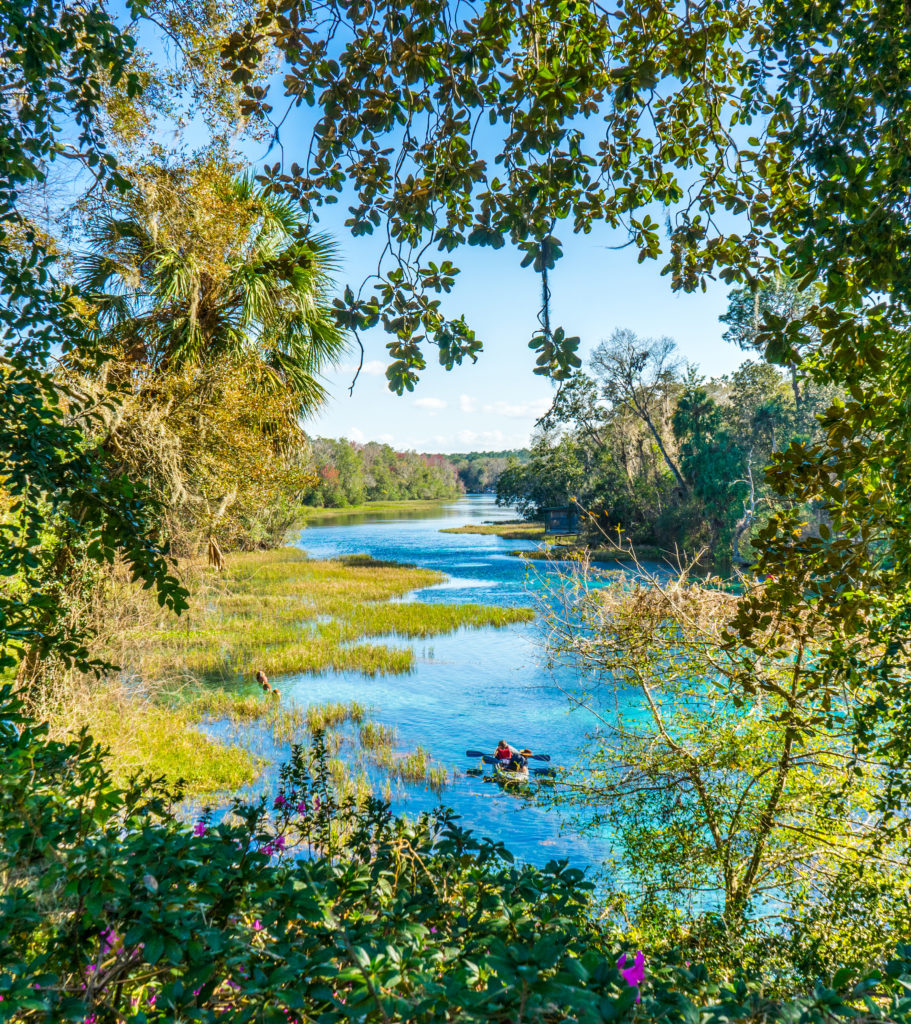 Meanwhile, Marwick has a host of other concerns, starting with the state’s proposed plan to run toll roads through some of North Central Florida’s most pristine landmasses.
Meanwhile, Marwick has a host of other concerns, starting with the state’s proposed plan to run toll roads through some of North Central Florida’s most pristine landmasses.
“Those could be an environmental and ecological disaster for Florida,” insists Marwick. “One of them could go up the east coast through some of those rural areas that are green and still a beautiful part of Florida. The question is, is this something the citizens will need and even desire? Toll roads are a big environmental threat wherever they end up going.”
Marwick also has concerns over what’s happening to the balance of nature in Florida and beyond. Even the bat populations that live in many of the nation’s caves could be destroyed, he contends.
“Caves are unique ecological systems,” explains Marwick. “Limiting access to caves is the best single thing you can do. Serious spelunkers practice good habits because they know they’re in a fragile environment. Except for those in supervised tours, other people break off stalagmites and stalactites for souvenirs. Teenagers and young people sometimes come into caves and drink beer and vandalize them.”
Then there’s the world of insects, another vital part of the circle of life, Marwick insists.
“Up to a hundred species of plants and animals a day may be becoming extinct,” warns Marwick. “But we go on about our lives as if everything is OK. Around the world insects are down 75 percent in some places. Even some of the rain forests had a 90 percent decrease. The planet is going through a real death knell of species. Butterflies have taken a tremendous hit in their population. There’s been a huge drop in butterflies and moths. They all populate different kinds of plants and flowers and the food we eat.”
Marwick is not alone in his quest to save the planet. He gets plenty of support from his wife, Pat, who shares his passion for the environment and the preservation of wildlife.
“She’s an animal lover,” says Marwick. “She believes in what I believe in.”
Knight’s Journey
Knight followed a slightly different path to Marion County. Born in a military hospital in Maryland, Knight traveled the world as the son of a career Navy captain. He credits his love of nature to his father, who went along with him on his Boy Scout camping trips.
“My dad was very interested in birds and butterflies, insects and the outdoors,” Knight recalls with a hint of nostalgia. “I started my first bird list when I was 12. I do Christmas bird counts every year now.”
A turning point in Knight’s life happened in 1953 during a family trip to Ocala and his first visit to Silver Springs.
“I remember the glass-bottom boat ride, the enormous numbers of fish, the clarity of the water, the Seminole village, the flamingos, the palm tree with a curl by the statue of Osceola, and Ross Allen,” muses Knight. “That trip gave me a direct view into the underwater world and the fact that it was complex and just as interesting and exciting as what was above the water.”
That introduction to Florida’s natural environment eventually helped Knight decide his career choice when he got into college. It turned out his professor, Howard T. Odum, had researched Silver Springs in the early 1950s. Then, 25 years later, Odum sent Knight to Silver Springs to do the same thing for his doctorate. From that two-year study, Knight earned a PhD in environmental science from the University of Florida. But that was only the beginning.
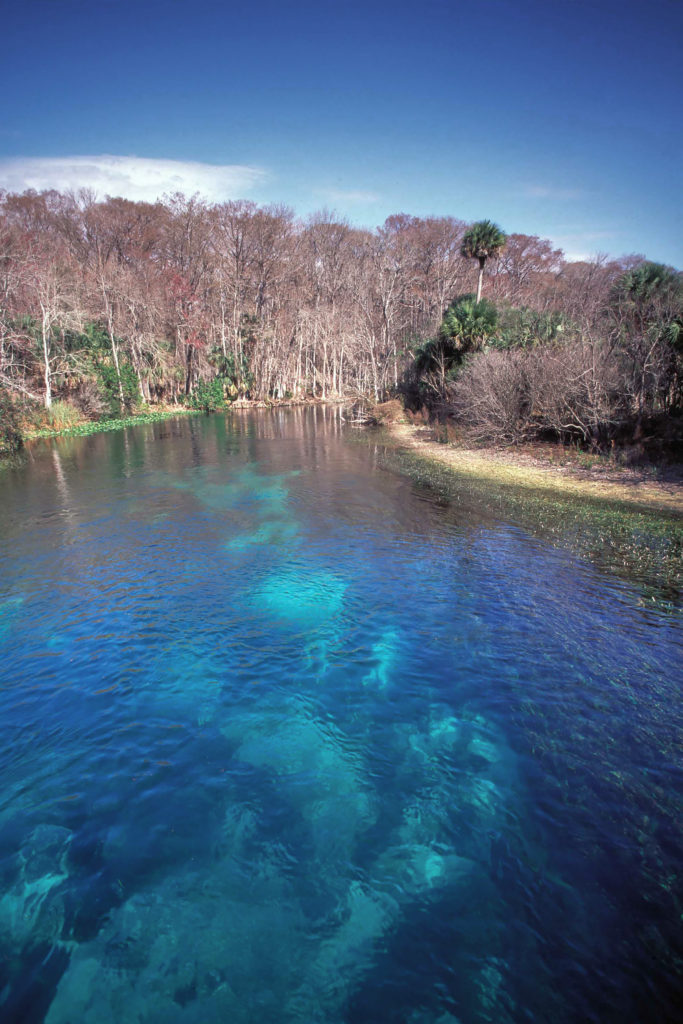 “I returned again in 2004 and 2005, and that’s when my eyes were opened up to the damage that was being done to Silver Springs,” Knight recalls with a touch of sadness. “I found the springs were greatly impaired. Many of them were polluted almost across the board. They also had problems with reduced flow, which is the lifeblood of the springs.”
“I returned again in 2004 and 2005, and that’s when my eyes were opened up to the damage that was being done to Silver Springs,” Knight recalls with a touch of sadness. “I found the springs were greatly impaired. Many of them were polluted almost across the board. They also had problems with reduced flow, which is the lifeblood of the springs.”
For eight years Knight worked under contract with state agencies as an expert on freshwater springs.
“I studied 18 springs,” recalls Knight. “I found they were in trouble and getting worse. They were polluted by nutrients and the groundwater was being depleted through pumping.”
A resident of Gainesville, Knight documented his findings and, in 2010, he founded the High Springs institute, named for the late Howard T. Odum, an American pioneer of ecosystem ecology. The nonprofit organization monitors and collects data on the condition of Florida’s springs through staff and volunteer efforts.
A few years after establishing the institute, Knight opened its educational center as a way to increase public awareness about the decline of the quality and quantity of Florida’s most vital resource.
The public can make a difference, insists Knight. He recommends that homeowners cut back on fertilizers and lawn watering. And they can participate in ecological outings and river cleanups. The institute offers plenty of volunteer opportunities, and there are classes and informational resources to get people activated.
Knight’s wife, Debbie Segal, also an environmental scientist, volunteers with the institute.
“She goes to high schools and tells the students where their drinking water comes from and why it’s important to preserve the springs,” Knight boasts. “She’s been doing that for years.”
Not one to sit quietly on the sidelines, Knight, 71, also gives presentations to civic, university, and government organizations. He has written numerous restoration plans, plus reports on the springs’ condition, and a ton of opinion pieces, many of which are included in his third book, Death by a Thousand Cuts—An Anthology of Springs Opinions.
“Silver Springs is dying by a thousand cuts,” maintains Knight. “Based on the state’s analysis, the largest sources of nutrient pollution at Silver Springs are septic tanks, livestock wastes, and agricultural and urban fertilizers. Flow reductions at Silver Springs are the result of excessive groundwater pumping throughout the region, from Gainesville to the north and The Villages to the south.”
Despite his accomplishments, Knight continues to swim upstream in his efforts to save the springs. For years he has fought against the relentless requests for groundwater extraction permits by local businessmen such as Frank Stronach, a billionaire cattleman who has waged an ongoing legal battle with environmental groups for years.
“It’s the big permits that are killing us,” avers Knight. “The Florida Water Management Districts are authorizing more than 4.5 billion gallons a day in groundwater extraction, which is half the historic flow of the springs in Florida. Basically, it’s like taking half the blood out of your body and expecting you to live that way.”
In another war, Knight attributes the decline of fish populations to the Rodman Dam, an Ocklawaha River remnant from the 1964 construction of the Cross Florida Barge Canal. Knight contends that Rodman Reservoir is getting the flow of water naturally meant for North Central Florida’s springs.
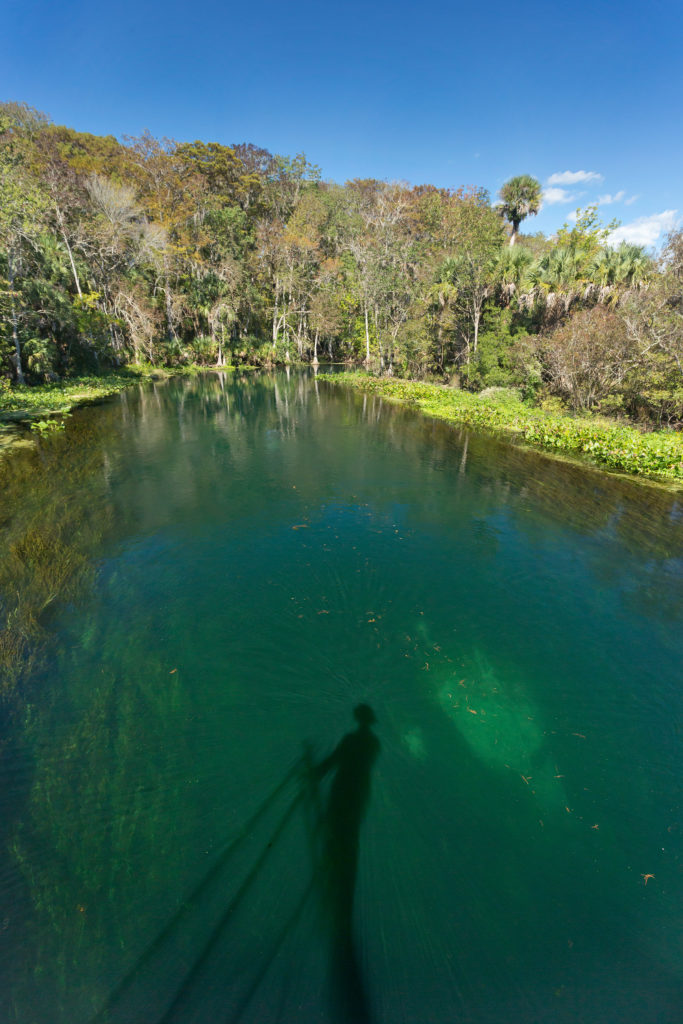 “Silver Springs cannot be restored without removal of the Rodman Dam,” Knight maintains. “The flowing water connection between the Silver River and the St. Johns River is a superhighway for migrating fish and manatees. The Rodman Dam is like a knee across the neck of this natural blue-way, and the aquatic environment cannot ‘breathe’ as long as the dam remains.”
“Silver Springs cannot be restored without removal of the Rodman Dam,” Knight maintains. “The flowing water connection between the Silver River and the St. Johns River is a superhighway for migrating fish and manatees. The Rodman Dam is like a knee across the neck of this natural blue-way, and the aquatic environment cannot ‘breathe’ as long as the dam remains.”
But it’s not just about the springs, admits Knight. Florida’s rivers, lakes and aquifers also are in danger.
“Lake Weir is in the same springshed that feeds Silver Springs,” explains Knight. “When I was giving talks to the homeowners’ associations, I noticed the water levels were clearly reduced, so the docks were stranded and the nutrient concentrations were very high. It’s the same issue throughout the lake region.”
The depletion of groundwater can trigger other problems, such as the formation of sinkholes. Also, there has already been an intrusion of saltwater into the freshwater springs on both of Florida’s coasts, Knight affirms.
“I became the voice for the springs,” Knight says, although he confesses he’s merely grabbing onto the coattails of men who went before him, like Jim Stevenson, a biologist and former park ranger with the Florida Park Service.
“The state had started the Florida Springs initiative under Governor Jeb Bush, thanks to Jim Stevenson,” Knight notes. “Jim has never stopped advocating for the springs. He’s on my board of directors at the institute. I call him ‘the grandfather of springs protection.’”
Without hesitation, Stevenson humbly accepts the title. “I just turned 80, so I guess ‘grandfather’ is pretty accurate,” he concedes.
A resident of Tallahassee, Stevenson remembers taking Jeb Bush and his newly appointed DEP secretary on a canoe trip through Ichetucknee Springs State Park near Lake City, shortly after the governor took office in 1999.
“I don’t even know if he’d seen a Florida spring at that time,” chuckles Stevenson. “I explained what was happening to Florida’s springs. The DEP secretary said they should form a springs task force, and he appointed me to head it up. In the 2000 legislative session, Governor Bush arranged for $2.5 million, the first ever money for springs protection. Education was our most important strategy. Few people in Florida knew anything about the springs.”
Bush continued to fund the program, as did Governor Charlie Crist after he took office in 2007, notes Stevenson.
“Then we got Governor (Rick) Scott,” Stevenson says with a sigh. “He cut the funding. The springs are still in trouble,” he laments. “There are two parts to springs protection, one is protecting the springs flow and the other is protecting the springs quality.”
A Rainbow on the Horizon
For Knight, the answer may come with his latest venture, a Silver Springs Environmental Center to be built at Silver Springs State Park. The center’s 12,000-square-foot first phase would include biological and cultural displays, classrooms, and a research lab where visiting scientists can study the area’s springs and hopefully find a way to restore them.
“It’s been a dream for me since 1980,” muses Knight. “Silver Springs is the largest artesian spring in the United States. It’s arguably the most important spring in the whole world. It has the largest long-term flow. The environmental center will be one more step on the stepping stones leading to Silver Springs restoration.”
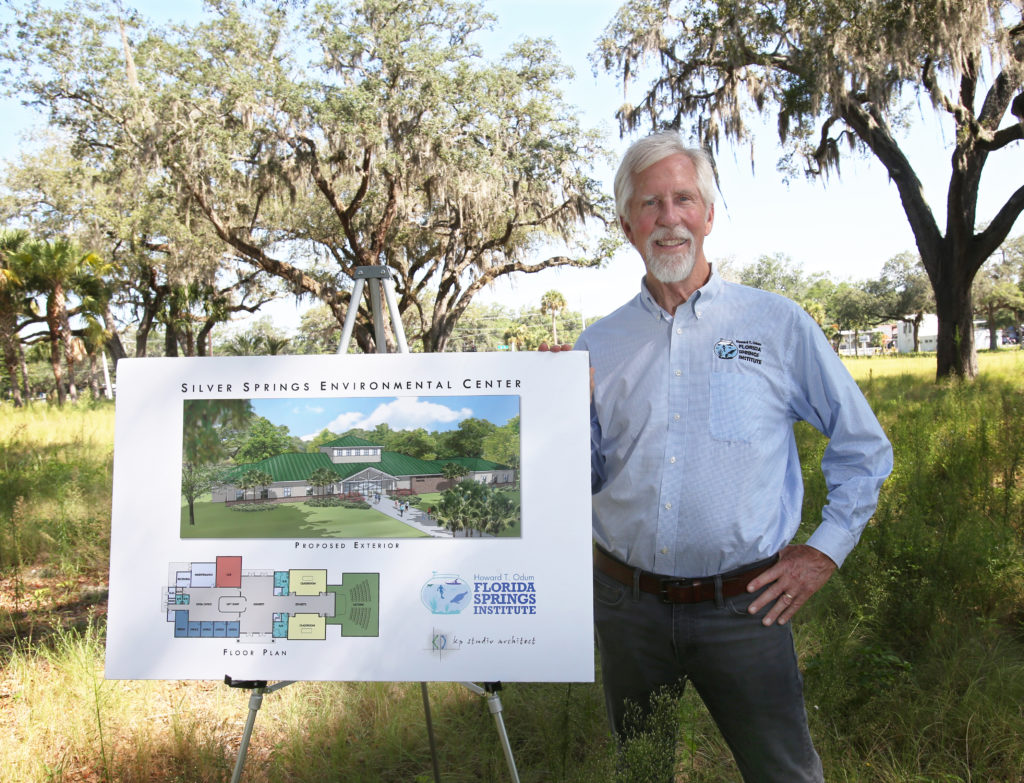 The ideal location, says Knight, is the former Wild Waters property on the corner of State Road 40 (Silver Springs Boulevard) and Baseline Road. He has set a fundraising goal of $5.7 million. Phase 2 of the project would include a lecture hall.
The ideal location, says Knight, is the former Wild Waters property on the corner of State Road 40 (Silver Springs Boulevard) and Baseline Road. He has set a fundraising goal of $5.7 million. Phase 2 of the project would include a lecture hall.
Knight’s plan is already attracting local support. The Felburn Foundation has directed $40,000 toward the architectural and basic engineering phases for the center, says Marwick, who sees it as a win-win proposition.
“I think it will be a great opportunity for scientists from all over the country to be able to come there and study the springs and to learn what it will take to preserve them and bring them back to their original glory,” notes Marwick.
However, Knight’s dream won’t become a reality without the approval of the Florida Department of Environmental Protection (DEP).
Weesam Khoury, press secretary for the DEP, states in an email that the Florida Park Service already has education centers at numerous locations throughout the state.
“Adding one at Silver Springs State Park is certainly something we are interested in,” Khoury writes. “Typically, the Department would operate its own facility, although in some instances, we do partner with academic institutions and nonprofit organizations on information and exhibits. In this instance, whether the Department would create an education center and/or partner with an outside entity on information and exhibits has not yet been determined…The addition of an education center is not currently in the existing Unit Management Plan for Silver Springs State Park, but is certainly possible.”
Scott Mitchell, director of the Silver River Museum, believes the center would complement the programs that are already being offered at the museum and would draw a different audience.
An estimated 10,000 school children, mostly of elementary age, come through the museum’s doors every year, whereas the new center would draw research scientists, college interns, and possibly high school students who are studying chemistry and biology, Mitchell notes.
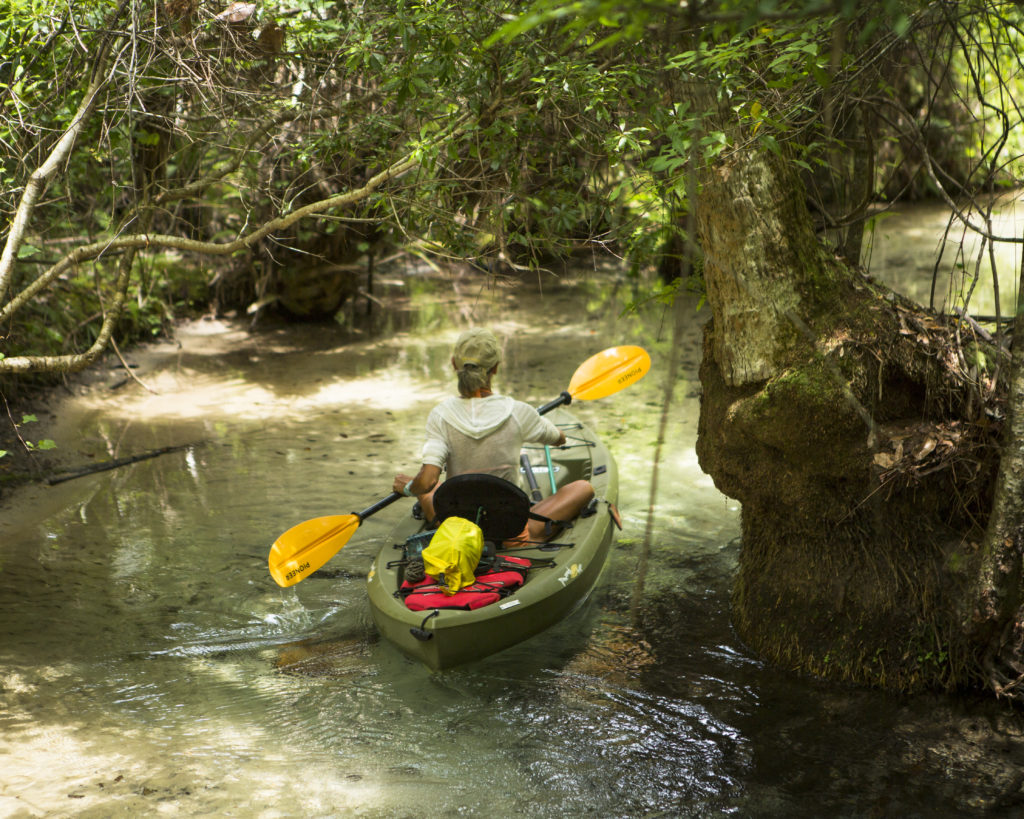 Although he considers himself an archaeologist and historian by profession, Mitchell admits he has a soft spot in his heart for environmental causes.
Although he considers himself an archaeologist and historian by profession, Mitchell admits he has a soft spot in his heart for environmental causes.
“What’s it going to look like when our grandkids are here?” he cautions. “If we don’t have our beautiful horse farms, prairie, Rainbow River, and the springs pumping out clear, fresh water, Marion County will become a landlocked county with an interstate and bad water and subdivisions as far as the eye can see, and people aren’t going to come here.
“Bob Knight is widely considered as an expert of Silver Springs and the Silver River,” Mitchell adds. “I hope he’s successful. It would be a great use of that property.”
For more information about the Silver Springs Environmental Center, visit www.floridaspringsinstitute.org.
To make a donation or to volunteer, send an email to info@FloridaSpringsInstitute.org or call (386) 454-9369.
What You Can Do
Join the Silver Springs Alliance:
Support sustainable stewardship of the Silver River ecosystem. For information, visit www.silverspringsalliance.org or email SilverSpringsAlliance@gmail.com
Donate to the Florida Springs Institute:
Support water quality and quantity monitoring of Florida spring systems as well as education and outreach programs designed for springs and aquifer education at all levels. Donations will help establish and operate the Silver Springs Environmental Education Center in Silver Springs State Park. Visit
www.floridaspringsinstitute.org/, send an email to
info@floridaspringsinstitute.org, or call the office in High Springs at (386) 454-9369.
Write to Governor Ron DeSantis asking him to restore the Ocklawaha River and Silver
Springs by breaching the Rodman Dam. www.freetheocklawaha.com
Learn more about the Free the Ocklawaha campaign from Florida Defenders of the Environment at www.fladefenders.org or call (352) 475-1119. A recent Free the Ocklawaha exhibit hosted by the Marion Cultural Alliance included interactive elements and may be accessed via www.artsteps.com/view/5f04a552d107b23ab4afb70e
Contact Marion County’s state legislators and request funding of Florida Forever projects.
Contact Marion County commissioners and request renewal of Pennies for Parks, the proceeds of which were used to establish the local park system and purchased 220 acres of land now incorporated into Silver Springs State Park and funded various improvements at Rainbow Springs State Park.






